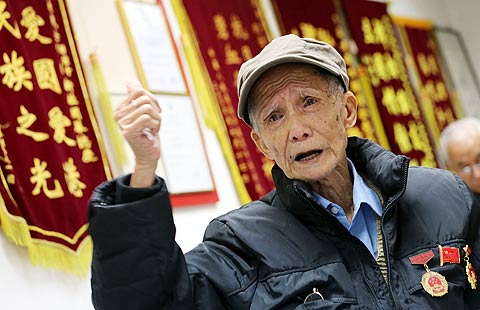Pavilion rebuilt in tribute to poet
Updated: 2014-05-28 09:51
By Mei Jia (China Daily)
|
|||||||||||
 |
|
Veteran poet Xie Mian and French embassy cultural official Nicolas Idier unveil the rebuilt Saint-John Perse Pavilion in Beijing. [Photo by Mei Jia / China Daily] |
A pavilion in which French Nobel laureate in literature Saint-John Perse (1887-1975) finished writing his signature work, Anabase, has been reconstructed, almost a century after the writer first arrived in Beijing.
The pavilion in western Beijing has been rebuilt under his name and is set to serve as a symbol of Sino-French friendship and literary exchange.
Saint-John Perse was the pen name of French poet and diplomat Alexis Leger, who lived in China from 1916 to 1921.
He spent much of his time at the Jinshan Temple on Yangtai Mountain in a Beijing suburb, and took a photo of a pavilion there. The pavilion later became a site of pilgrimage for fans of the writer, who won the Nobel Prize for literature in 1960.
"Chinese thinking and lifestyle is clearly reflected in Saint-John Perse's works. Chinese literature influenced him as to the length of verses, and enabled him to introduce new verse into French poetry," says French writer Zeno Bianu in Beijing.
Bianu was in Beijing with other French poets, as part of an exchange with Chinese poets, translators and researchers. Organized by the Peking University Poetry Research Center and sponsored by Beijing Zhongkun Investment Group, the 30 poets also toured Huangshan Mountain in Anhui province and Yinchuan in the Ningxia Hui autonomous region.
Jacques Darras, a celebrated poet and translator, says the mutual exchanges are going so well that he wishes "every day could be spent like this".
Related Stories
To know the ethnic groups, read their prose 2013-08-27 14:21
Kids' reading style 2013-08-15 15:19
Reading to get new push in law 2013-08-14 11:06
Visually impaired perform first reading drama 2013-08-10 10:54
Today's Top News
Ukraine to pay gas debt to Russia
Parties stunned by EP election results
US urged to explain cyber snooping
Nigeria military locates 200 girls
Beijing tells Hanoi it must pay for losses
Egyptians vote in presidential polls
Ukraine troops, militants clash near Donetsk airport
Eurosceptic UKIP tops elections in Britain
Hot Topics
Lunar probe , China growth forecasts, Emission rules get tougher, China seen through 'colored lens', International board,
Editor's Picks

|

|

|

|

|

|







